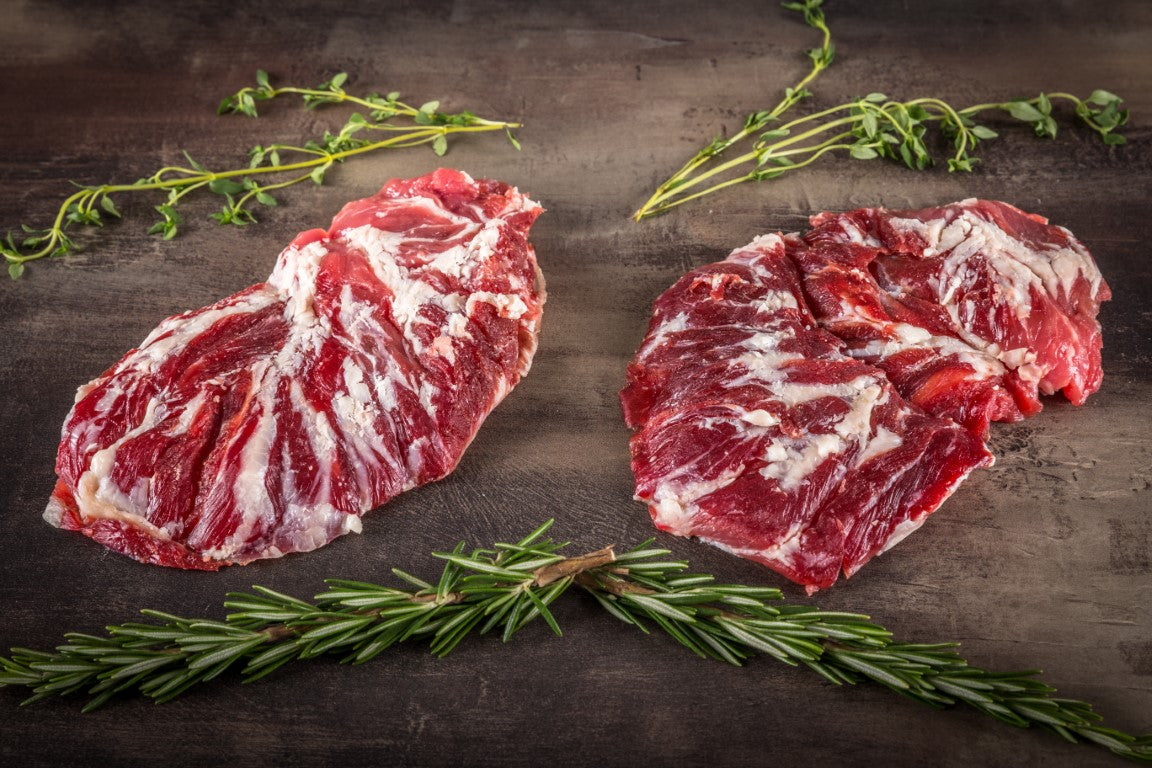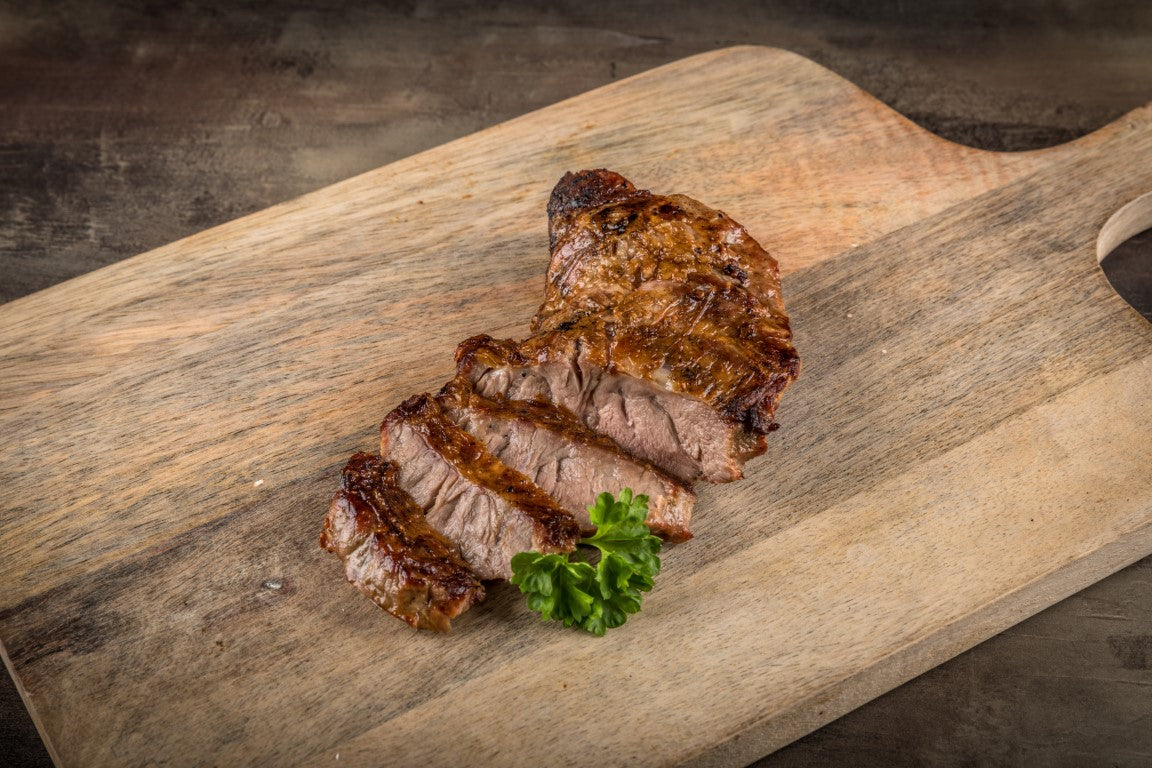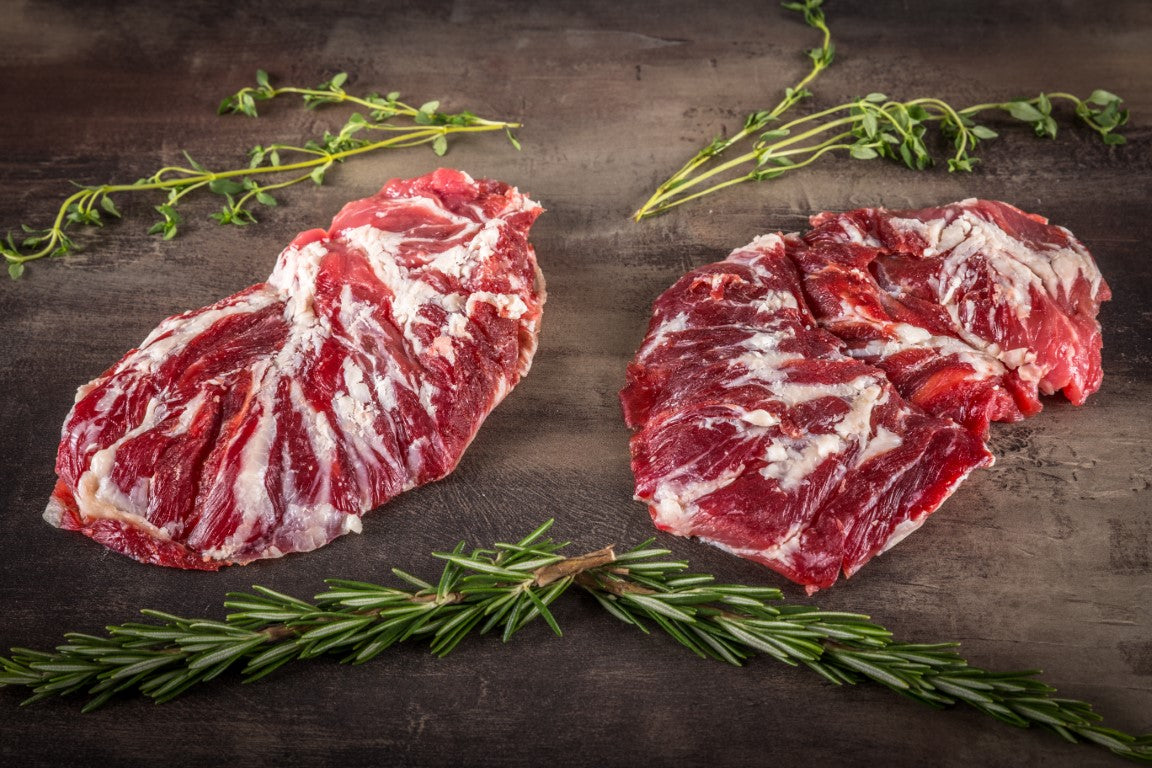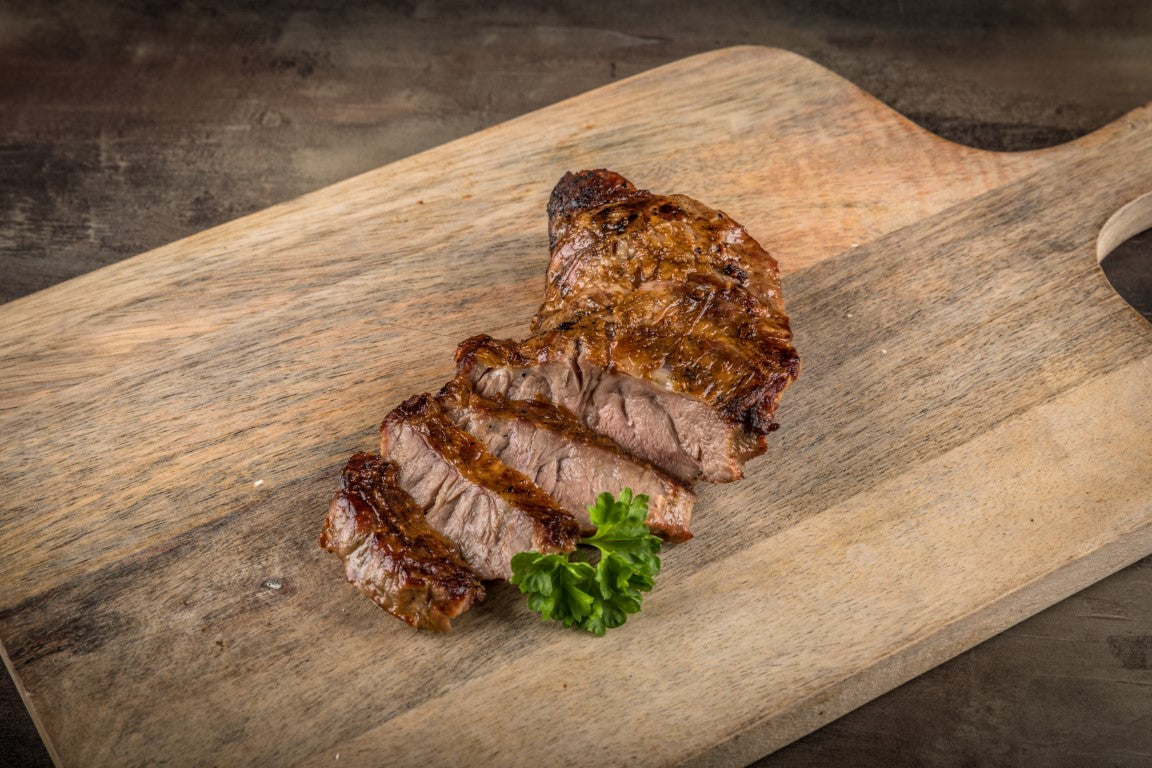Spider steak from Black Forest pasture-fed beef
The spider steak is ideal for pan-frying and grilling. Because of its low thickness, it only requires a short period of direct, high heat to achieve outstanding results.
The steak, also called bat steak , is a virtually unknown cut of beef. It owes its name to the marbling, reminiscent of a spider's web. The same cut is called tile meat in pork; the spider steak is therefore tile meat from beef . The muscle is used little, which makes it particularly tender.
Through our own rearing and slaughtering, we influence species-appropriate animal husbandry and thus the quality of the meat at all points.
The steak, also called bat steak , is a virtually unknown cut of beef. It owes its name to the marbling, reminiscent of a spider's web. The same cut is called tile meat in pork; the spider steak is therefore tile meat from beef . The muscle is used little, which makes it particularly tender.
Through our own rearing and slaughtering, we influence species-appropriate animal husbandry and thus the quality of the meat at all points.
Spider Steak/ Bat Cut Explained
The characteristics of the Spider Steak
The spider steak is a muscle in the leg of a cow, located on the so-called " spider bone ," responsible for the movement of the pelvic floor. Often visually frayed, it impresses with its flavor and consistency. It is known by many regional names in Germany, such as "Schlössle ," "Dackelchen ," " Schnippelfleisch, " or "Fledermaus" (bat) because of its fatty veins.
Raising our cattle
When you buy Spider Steak from us, you're getting meat from our own livestock and that of our partner farms, all located in the immediate vicinity of our butcher shop in the Black Forest. The animals are raised exclusively on our own farm feed.
Our short transport routes protect both the livestock and the environment: The animals are transported a maximum of 50 km, which contributes to the quality of the meat. We place great importance on humane and stress-free slaughter.
Our short transport routes protect both the livestock and the environment: The animals are transported a maximum of 50 km, which contributes to the quality of the meat. We place great importance on humane and stress-free slaughter.
Dry-aged beef – quite normal for us
What's trendy today is tradition for us. We've always aged our beef steaks exclusively using the "dry-aged" method. The loss of liquid causes the beef to lose up to 50% of its weight, which enhances the natural, robust flavor of the meat without causing it to dry out during preparation.
Preparation of Spider Steak
How to prepare spider steak on the grill – in 6 steps
Preparation:
- Prepare 2 zones on the grill: 1st zone: As high heat as possible; 2nd zone: Only the indirect heat of zone 1
- Remove the steak from the refrigerator, season with salt, and after 2-3 minutes, place it in the hot zone. Grill it on all sides until it acquires a crispy texture.
- Place the steak in the indirect zone and reduce the heat in the hot zone.
- Insert the core temperature probe into the steak.
- When the steak reaches the desired core temperature , remove it from the grill and let it rest for 2-3 minutes.
- Carve the steak across the grain and serve on warmed plates.
How to cook spider steak in a pan – in 5 steps
Preparation:
- Preheat pan without oil for 2-4 minutes at maximum heat; preheat oven to approximately 120°C.
- Salt the steak and add about 1 tablespoon of oil to the pan, then sear it on all sides to create roasted flavors.
- Place the steak in the oven and insert the core temperature probe .
- When the desired core temperature is reached, remove the steak from the oven and let it rest for 2-3 minutes.
- Carve the steak across the grain and serve.
Measuring the core temperature of the Spider Steak
Because the spider steak is thin, a thermometer with a thin tip is recommended. To accurately measure the core temperature, insert the probe all the way to the core.
Tip: To hit the core exactly, place the probe lengthwise on the piece and measure the penetration depth.
Spider Steak core temperature
The core temperature is a matter of taste. Here's a list of recommendations:
* Recommendation for Spider Steaks: 56 °C
| Designation | Description | core temperature |
|---|---|---|
| Blue | Roasted on the outside, cool and raw on the inside | 42 °C |
| Rare / Bloody | Very reddish in the core | 48-52 °C |
| Medium-Rare | Slight discoloration, still strongly reddish | 52-56 °C |
| medium | Recolored, with red tone | 56-60 °C |
| Well Done / Through | Almost completely recolored, no red tone | 60-64 °C |







 Aus eigenem & Partner Viehbestand
Aus eigenem & Partner Viehbestand Dienstags und Donnerstags Versandtag
Dienstags und Donnerstags Versandtag

